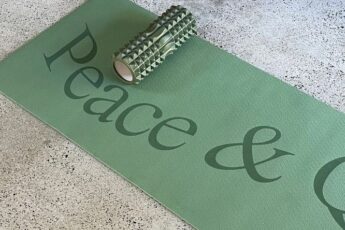Summer’s approaching, which means we’re getting closer to beach days and bright skies. However, with high temperatures comes the risk of dehydration. Dr. Stephanie Flaherty explains that if you don’t realise you’re dehydrated it can lead to some serious health issues, such as kidney problems, seizures, and hypovolemic shock. While mild or moderate dehydration is relatively easy to overcome by drinking enough fluids, severe dehydration requires treatment from medical professionals.
So if you want to protect your body during the summer months, you need to find ways to stay hydrated. Below, we’ve listed a few different ways you can work hydration into your daily routine.
You’ll also like this:
I Got Smile Direct Club To Straighten My Teeth, And Here’s Everything You Need To Know
Powerful Health Benefits of Dandelion, Coriander, and Ginger
Nourish Your Body And Mind With These Ultra-Calming Daily Rituals
1. Have a water drinking goal
Rather than just having a vague idea of how much water to drink, you can set a measurable water drinking goal per day. For example, you can aim to drink a certain amount of ounces per day or a certain number of glasses. Generally, we want to base our water intake on our body weight.
Good Calculators designed a water intake calculator that you can use to determine how much water you need to drink based on how long you work out for and how much you weigh. For instance, according to the calculator, a person who weighs 52 kilograms and works out for one hour each day will need to drink at least 2.9 litres of water each day to stay hydrated.
2. Eat hydrating fruits and vegetables
You can also add water-rich fruits to your diet so you can fight thirst while feeding yourself. Eat This Not That explains that one-fifth of human water consumption comes from food, mainly fruits and vegetables. And some of the most hydrating foods include cucumber, celery, radish, tomato, and zucchini, which all have a water content of 95%. Other popular options include watermelons, strawberries, and cauliflower which have a water content of 92%. Plus, by loading up on these water-rich foods, you’re not only hydrating yourself but also nourishing your body with healthy nutrients.
3. Drink flavored liquids
Water and fruits aren’t the only healthy hydration foods you can consume. SymptomFind’s article about sports drinks notes that the best liquids for hydration are chocolate milk, coconut water, fruit juice, smoothies, and protein shakes. You can use flavoured liquids as alternatives to water, since they’re equally hydrating and also contain additional nutrients.
Chocolate milk contains restorative amounts of carbs and proteins, as well as electrolytes like calcium, magnesium, and potassium, which your body needs when dehydrated. However, be sure to watch out for the sugar content in your drinks. Since the body uses water to metabolize sugar, excessive sugar intake will increase the need for water, triggering dehydration.
4. Keep the skin moisturised
Under extreme heat, the same factors that cause internal dehydration will also cause skin dehydration. But since there’s no strong link between oral and skin hydration, very little of the water we drink ends up reaching our skin — which means we need to take extra steps to keep it hydrated.
An article entitled Best Moisturisers For Your Skin Glow posted here at Caviar Feeling, it’s the outer layer of your skin that’s responsible for maintaining hydration in deeper skin levels. A good moisturizer can help it serve that purpose by trapping moisture at the upper layers of the skin. This way, your skin stays plump and hydrated despite the heat.
Harsh summer temperatures put your body at risk of dehydration. Keep yourself safe by building good hydration habits, such as setting water drinking goals, eating and drinking hydrating substances, and moisturising your skin on a regular basis.
You’ll also like this:
The 8 Best Summer Fragrances and Perfumes for Women
I Banished My Breakouts In Just One Month With Alya Skin Range









Leave a Comment